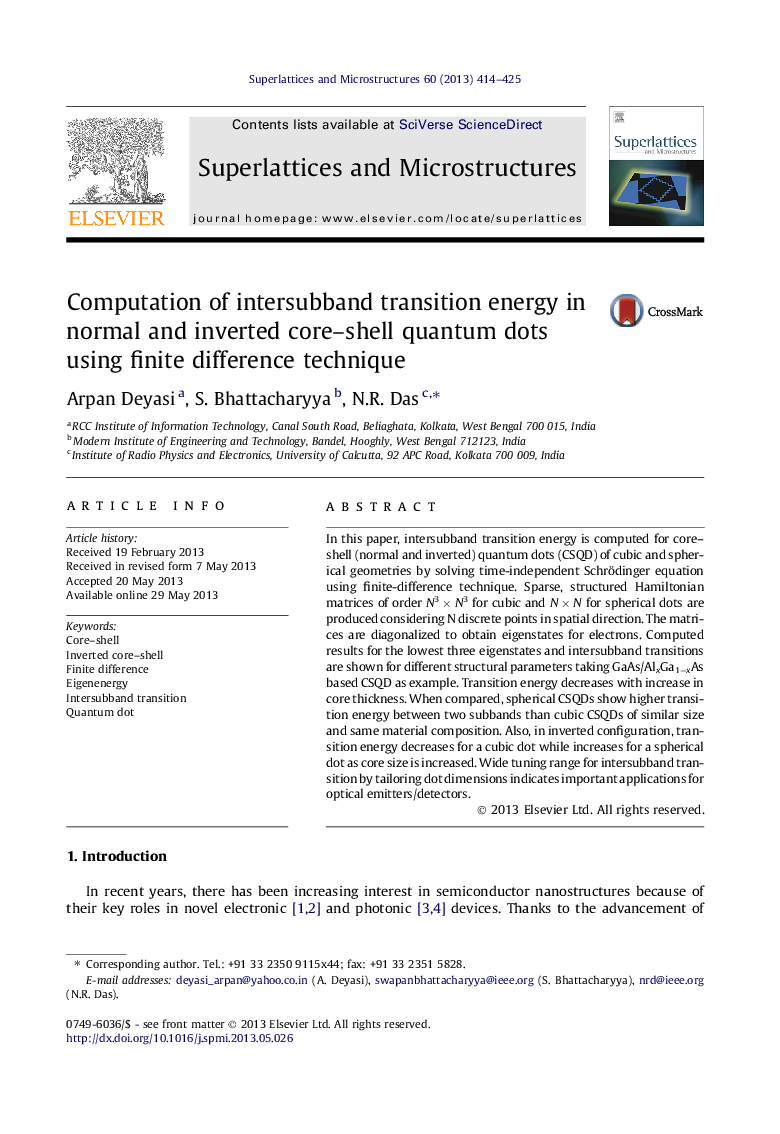| Article ID | Journal | Published Year | Pages | File Type |
|---|---|---|---|---|
| 7943505 | Superlattices and Microstructures | 2013 | 12 Pages |
Abstract
In this paper, intersubband transition energy is computed for core-shell (normal and inverted) quantum dots (CSQD) of cubic and spherical geometries by solving time-independent Schrödinger equation using finite-difference technique. Sparse, structured Hamiltonian matrices of order N3Â ÃÂ N3 for cubic and NÂ ÃÂ N for spherical dots are produced considering N discrete points in spatial direction. The matrices are diagonalized to obtain eigenstates for electrons. Computed results for the lowest three eigenstates and intersubband transitions are shown for different structural parameters taking GaAs/AlxGa1âxAs based CSQD as example. Transition energy decreases with increase in core thickness. When compared, spherical CSQDs show higher transition energy between two subbands than cubic CSQDs of similar size and same material composition. Also, in inverted configuration, transition energy decreases for a cubic dot while increases for a spherical dot as core size is increased. Wide tuning range for intersubband transition by tailoring dot dimensions indicates important applications for optical emitters/detectors.
Related Topics
Physical Sciences and Engineering
Materials Science
Electronic, Optical and Magnetic Materials
Authors
Arpan Deyasi, S. Bhattacharyya, N.R. Das,
